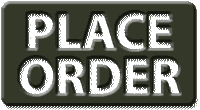Emergency Food Preparation
When Food Supplies Are Low
If activity is reduced, healthy people can survive on half their usual food intake for an extended period and without any food for many days. Food, unlike water, may be rationed safely, except for children and pregnant women. If your water supply is limited, try to avoid foods that are high in fat and protein, and don’t stock salty foods, since they will make you thirsty. Try to eat salt-free crackers, whole grain cereals and canned foods with high liquid content. You don’t need to go out and buy unfamiliar foods to prepare an emergency food supply. You can use the canned foods, dry mixes and other staples on your cupboard shelves. In fact, familiar foods are important. They can lift morale and give a feeling of security in time of stress. Also, canned foods won’t require cooking, water or special preparation. Following are recommended short-term food storage plans.
Special Considerations
As you stock food, take into account your family’s unique needs and tastes. Try to include foods that they will enjoy and that are also high in calories and nutrition. Foods that require no refrigeration, preparation or cooking are best. Individuals with special diets and allergies will need particular attention, as will babies, toddlers and elderly people. Nursing mothers may need liquid formula, in case they are unable to nurse. Canned dietetic foods, juices and soups may be helpful for ill or elderly people. Make sure you have a manual can opener and disposable utensils. And don’t forget nonperishable foods for your pets.
How to Cook If the Power Goes Out
For emergency cooking you can use a fireplace, or a charcoal grill or camp stove can be used outdoors. You can also heat food with candle warmers, chafing dishes and fondue pots. Canned food can be eaten right out of the can. If you heat it in the can, be sure to open the can and remove the label first.
Short-Term Food Supplies
Even though it is unlikely that an emergency would cut off your food supply for two weeks, you should prepare a supply that will last that long. The easiest way to develop a two-week stockpile is to increase the amount of basic foods you normally keep on your shelves.
Storage Tips
- Keep food in a dry, cool spot – a dark area if possible.
- Keep food covered at all times.
- Open food boxes or cans care-fully so that you can close them tightly after each use.
- Wrap cookies and crackers in plastic bags, and keep them in tight containers.
- Empty opened packages of sugar, dried fruits and nuts into screw-top jars or air-tight cans to protect them from pests.
- Inspect all food for signs of spoilage before use.
- Use foods before they go bad, and replace them with fresh supplies, dated with ink or marker. Place new items at the back of the storage area and older ones in front.
Nutrition Tips
During and right after a disaster, it will be vital that you maintain your strength. So remember:
- Eat at least one well-balanced meal each day.
- Drink enough liquid to enable your body to function properly (two quarts a day).
- Take in enough calories to enable you to do any necessary work.
- Include vitamin, mineral and protein supplements in your stockpile to assure adequate nutrition.
Shelf-life of Foods for Storage
Here are some general guidelines for rotating common emergency foods.
Use within six months:
- Powdered milk (boxed)
- Dried fruit (in metal container)
- Dry, crisp crackers (in metal container)
- Potatoes
Use within five years:
- Canned Longhorn roast beef, turkey, and pork
- Dry Pinto Beans
- Canned vegetables
- Canned fruits, fruit juices — Canned products are more stable during floods than paper sacked items.
Use within one year:
- Ready-to-eat cereals and uncooked instant cereals (in metal containers)
- Peanut butter
- Jelly
- Hard candy and canned nuts
- Vitamin C
May be stored indefinitely (in proper containers and conditions):
- Wheat/flower
- Vegetable oils
- Dried corn
- Baking powder
- Soybeans
- Instant coffee, tea and cocoa
- Salt
- Noncarbonated soft drinks
- White rice
- Bouillon products
- Dry pasta, noodles
- Powdered milk (in nitrogen-packed cans)
Disaster Supplies
It’s 2:00 a.m. and a flash flood forces you to evacuate your home-fast. There’s no time to gather food from the kitchen, fill bottles with water, grab a first-aid kit from the closet and snatch a flashlight and a portable radio from the bedroom. You need to have these items packed and ready in one place before disaster strikes.
Pack at least a three-day supply of food and water, and store it in a handy place. Choose foods that are easy to carry, nutritious and ready-to-eat.
In addition, pack these emergency items:
- Medical supplies and first aid manual
- Hygiene supplies
- Portable radio, flashlights and extra batteries
- Shovel and other useful tools
- Household liquid bleach to treat drinking water
- Money and matches in a waterproof container
- Fire extinguisher
- Blanket and extra clothing
- Infant and small children’s needs (if appropriate)
- Manual can opener — If the Electricity Goes Off
- FIRST, use perishable food and foods from the refrigerator.
- THEN, use the foods from the freezer. To minimize the number of times you open the freezer door, post a list of freezer contents on it. In a well-filled, well-insulated freezer, foods will usually still have ice crystals in their centers (meaning foods are safe to eat) for at least three days.
- FINALLY, begin to use non-perishable foods and staples.
Place orders with the LTH store info@head2tail.com. Check the site for recipes at www.head2tail.com. Store phone 740 758 5050. Location — 35000 Muskrat, Barnesville, Ohio 43713.

